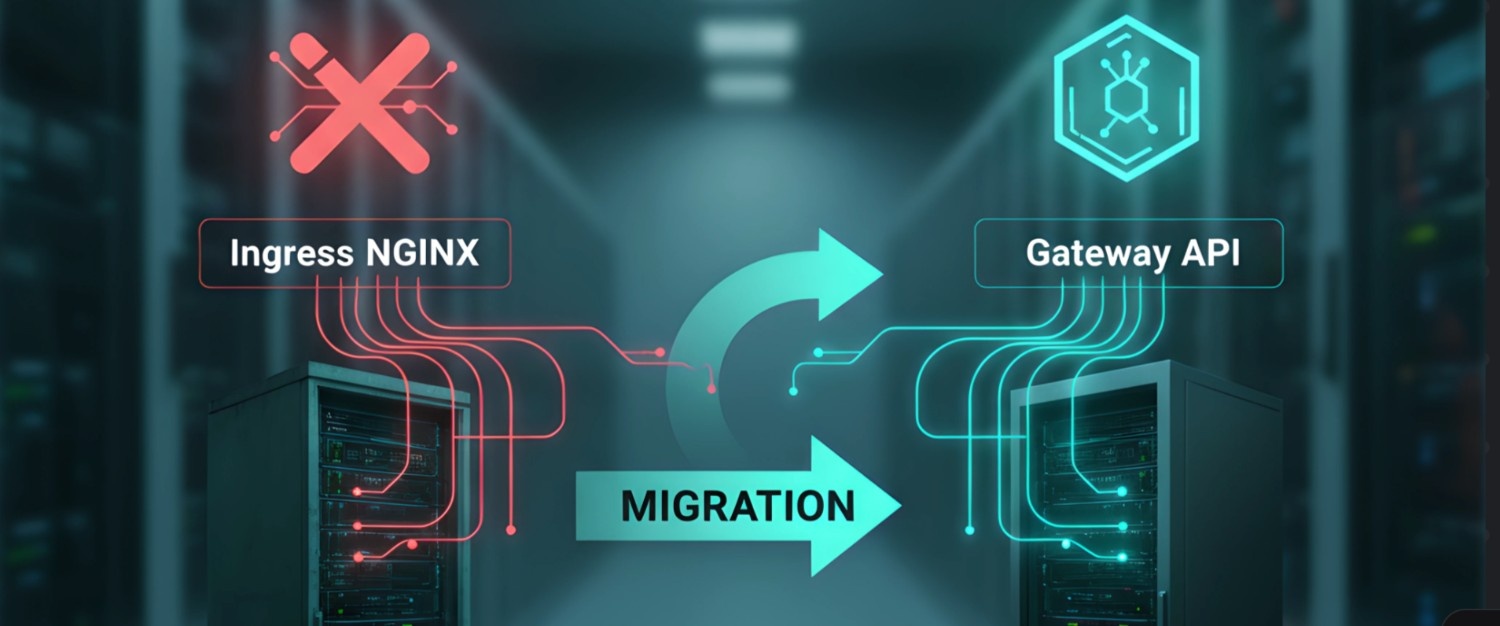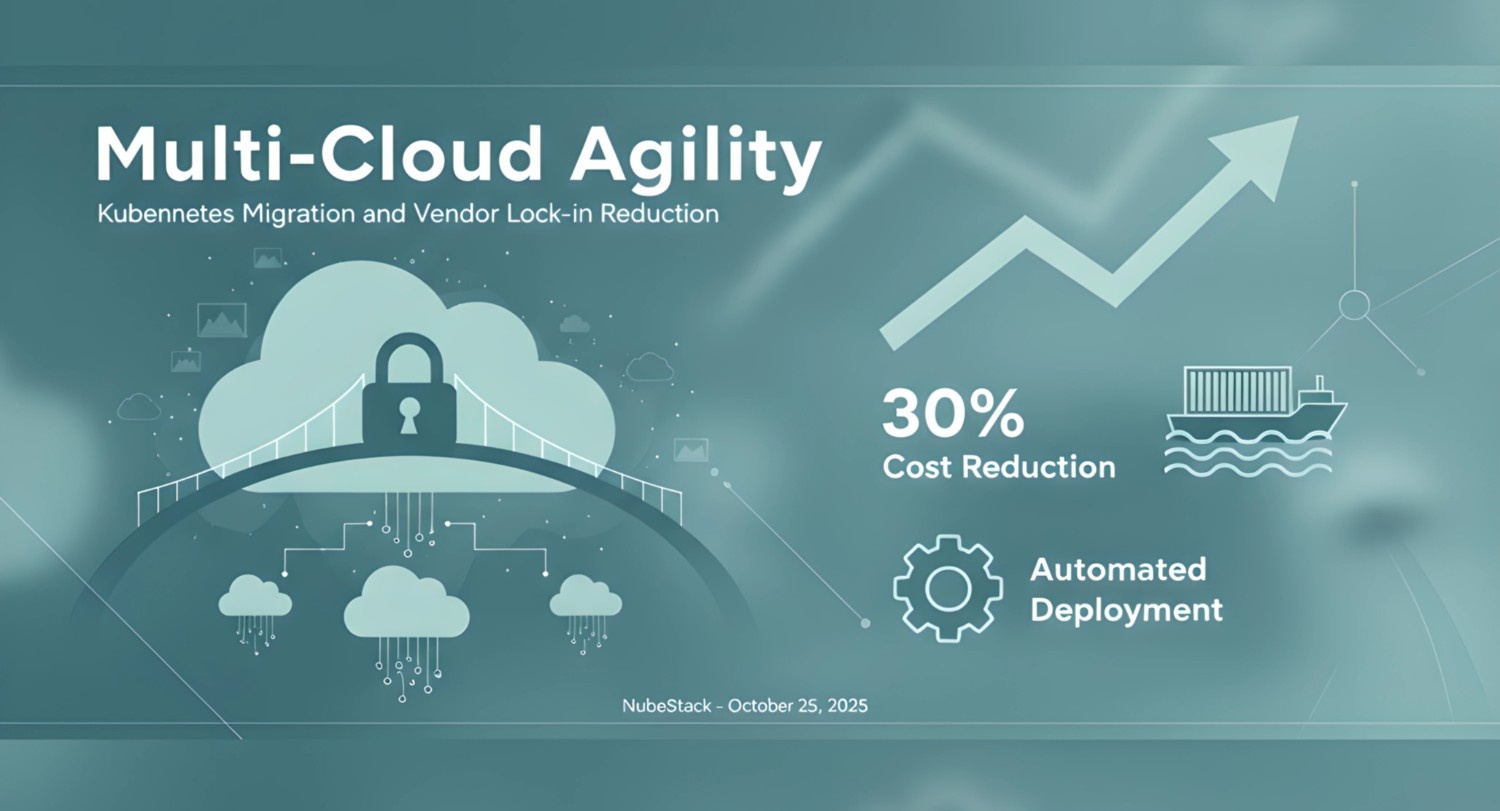The Kubernetes project has announced the retirement of Ingress NGINX, with full end-of-life scheduled for March 2026.
For many organisations, this marks one of the most significant networking shifts in recent years—impacting routing, TLS, automation, and cluster security.
As a cloud engineering and platform services provider, NuBeStack helps businesses modernise their infrastructure. This transition is an opportunity to move toward a more secure, extensible, and future-proof networking model.
Why Ingress NGINX Is Being Retired
Ingress NGINX has been one of the most widely adopted ingress controllers in Kubernetes. But several long-standing challenges ultimately led to its retirement.
1. Maintenance Burden and Growing Technical Debt
Over time, Ingress NGINX accumulated:
- Hundreds of annotation-driven features
- Deep integrations with NGINX configuration snippets
- A large backlog of issues and pull requests
This flexibility came at a cost: very few maintainers were left supporting an extremely complex codebase, making long-term sustainability impossible.
2. Security Concerns and CVEs
In 2025, the admission controller was affected by CVE-2025-1974, a high-severity vulnerability that exposed clusters to potential remote code execution.
With limited maintainer bandwidth, providing timely patches became increasingly difficult.
Continuing to rely on Ingress NGINX introduces growing long-term security risks, especially for production workloads and regulated environments.
3. Kubernetes Is Moving Toward Gateway API
Kubernetes networking has evolved significantly. The Gateway API now offers:
- Strong separation of responsibilities
- Rich routing features (headers, weights, mTLS, TCP/UDP)
- Better extensibility and portability
- A more standardised model across vendors
Ingress was never designed for the full range of modern L7 routing requirements—Gateway API is the future.
What Are Your Options?
✔️ 1. Adopt the Gateway API (Recommended)
Gateway API is now the Kubernetes-endorsed path forward, offering:
- Cleaner, role-oriented resource model
- Support for advanced routing
- Broad controller ecosystem
- Sustainable long-term governance
Most major networking vendors now prioritise Gateway API support.
✔️ 2. Switch to Another Ingress Controller
If organisations prefer to stay with the Ingress pattern, alternatives include:
- HAProxy Ingress Controller
- Traefik
- NGINX OSS/Plus Ingress Controller
These remain viable but do not offer the durability and extensibility of Gateway API.
Challenges with Legacy Ingress NGINX Deployments
Many organisations will face migration challenges including:
- Large numbers of annotation-heavy ingress objects
- TLS termination and certificate management changes
- Complex rewrite rules embedded in annotations
- Dependence on NGINX-specific behaviours
- CI/CD pipelines tightly integrated with existing ingress definitions
This makes a planned, validated, and reversible migration essential.
How NuBeStack Helps You Transition Smoothly
NuBeStack provides end-to-end assistance for organisations retiring Ingress NGINX and adopting modern Kubernetes networking.
1. Architecture Analysis
We review your existing setup, including:
- Ingress rules and annotations
- Application routing patterns
- Custom NGINX configurations
- External load balancer and DNS dependencies
- Multi-environment deployments
You receive a migration roadmap and risk assessment.
2. Gateway API Design
NuBeStack engineers design a production-ready Gateway API configuration:
GatewayClassandGatewayresourcesHTTPRoute,TCPRoute,TLSRouteimplementations- mTLS and advanced routing policies
- Helm, Kustomize, and Terraform automation
We also provide NuBeStack Gateway API templates to accelerate rollout.
3. Zero-Downtime Migration
We enable safe migration with:
- Side-by-side Ingress + Gateway API deployment
- Gradual traffic shifting
- Header-based canaries
- Certificate re-provisioning
- Full rollback capabilities
Your production traffic stays uninterrupted.
4. Enhanced Security and Observability
Gateway API unlocks stronger security controls.
NuBeStack implements:
- mTLS
- Rate limiting
- L7 traffic policies
- Isolation between teams and namespaces
- Policy-driven routing
- Integrated observability dashboards
This provides stronger security than legacy Ingress setups.
5. Ongoing Management
For customers using NuBeStack’s managed cloud services:
- We keep your gateway controllers fully supported
- Provide incident handling
- Maintain compatibility with Kubernetes upgrades
- Continuously monitor routing and certificate health
You no longer need to worry about deprecated networking components.
Benefits for Your Organisation
- Future-proof networking stack aligned with Kubernetes direction
- Improved reliability and security
- Better separation of duties between platform and app teams
- More flexible and feature-rich routing
- Safer upgrades and CI/CD workflows
- Lower long-term operational risk
Conclusion
The retirement of Ingress NGINX marks the beginning of a new era in Kubernetes networking.
The Gateway API offers a more robust, secure, and sustainable foundation—and now is the perfect time to modernise.
NuBeStack ensures your migration is safe, efficient, and future-proof, whether you’re using Kubernetes in the cloud or on-prem.
If you’re ready to transition away from Ingress NGINX, NuBeStack can help you start in as little as 48 hours.
Contact us today to begin your Gateway API migration journey.



